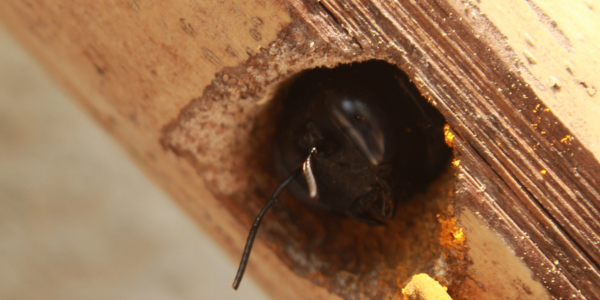
Why Does Thinking About Bugs Make You Itch? (And 7 More Answers to Pest Questions You Never Thought to Ask)
Have you ever felt a sudden itch at the thought of bugs crawling? Or wondered whether mice truly have a fondness for cheese? As pest control experts, we encounter questions like these every day…and we love answering them! In this blog post, we’ll dive into some common questions we get about pests. From the flight habits of cockroaches to the number of eyes on a spider, let’s explore the answers to these pest-related questions and uncover the secrets potentially lurking within our homes.
Why Does Thinking About Bugs Make You Itch?
Are you already itching right now? The phenomenon of feeling itchy at the mere thought of something is known as “psychogenic itching.” It’s believed to stem from the power of suggestion, where the mere mention or visualization of insects triggers a subconscious response in our brains, causing us to experience physical sensations like itching. Our minds are wired to react to perceived threats, and the idea of bugs crawling on our skin can evoke a primal urge to defend ourselves, manifesting as an uncontrollable itch.
Do Mice Like Cheese?
Contrary to popular belief, mice don’t necessarily have a preference for cheese. While they may nibble on a piece of cheese if it’s readily available, mice are opportunistic feeders that gravitate towards high-calorie foods like grains, seeds, and nuts. Their diet largely depends on what’s accessible in their environment, so while cheese might make for a convenient snack in cartoons, it’s not necessarily their top choice in the real world.
How Many Eyes Do Spiders Have?
Most spiders have eight eyes, arranged in various configurations depending on the species. These multiple eyes provide spiders with a wide field of vision, allowing them to detect movement and perceive their surroundings more effectively. However, not all spider species have the same number of eyes, with some possessing fewer or even none at all!
Can Cockroaches Fly?
Yes, some species of cockroaches can fly, while others are not. Cockroaches have two pairs of wings: a set of forewings known as tegmina and hindwings used for flying. However, not all cockroaches are proficient flyers, and flight capabilities vary among different species. Some cockroaches may only glide short distances, while others are adept at sustained flight.
What’s the Difference Between a Bug and an Insect?
In scientific terms, all bugs are insects, but not all insects are bugs. The term “bug” refers to a group of insects belonging to the order Hemiptera, characterized by piercing-sucking mouthparts and forewings forming a protective covering over their bodies. In contrast, the term “insect” encompasses a broader category of arthropods with three distinct body segments, six legs, and typically one or two pairs of wings.
Do Bed Bugs Jump?
No, bed bugs do not possess the ability to jump. Unlike fleas, which are renowned for their remarkable jumping abilities, bed bugs are wingless insects with limited mobility. Instead of jumping, bed bugs rely on crawling to move around, utilizing their flattened bodies to navigate through tight spaces and crevices in search of their next blood meal.
Where Do Fruit Flies Come From?
These pests may seemingly pop up out of nowhere, but there’s always a reason! Fruit flies are commonly found near ripe or fermenting fruits and vegetables, as well as in damp, decaying organic matter like garbage bins and drains. These tiny insects are attracted to the yeasty, sugary odors emitted by ripening fruits, which serve as breeding grounds for fruit fly populations. Female fruit flies lay their eggs on the surface of fermenting materials, and within days, the eggs hatch into larvae, completing the life cycle of these nuisance pests.
What Does a Termite Look Like?
Termites are small, pale insects with soft bodies and straight antennae. They are often mistaken for ants due to their similar size and social behavior. However, termites can be distinguished by their straight, bead-like antennae and uniform body shape, with no distinct waist like ants. Additionally, termites may have wings during certain stages of their life cycle, known as alates or swarmers, which they use for mating flights to establish new colonies.
Contact Us to Knockout All Your Pest Questions!
Exploring the world of pests can be both fascinating (if we do say so ourselves). However, when these pests invade your home, they can pose significant risks to your family and property.
If you’re facing a pest problem in your home, don’t hesitate to reach out to Knockout Pest Control for a free estimate. Our team of experts is here to answer all of your pest questions and ensure a pest-free environment for you and your loved ones.
Contact us today for a free estimate.


